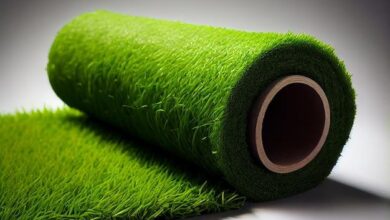How To Make a Modern Deer Fence for Your Garden

You can imagine the frustration of working day in and day out in the garden only to find that deer have eaten your tomatoes, nibbled on the squash and peas, or ripped the bark off your trees.
We’ve tried everything from human hair to Irish Spring soap to deter the deer, but to no avail.
The best method to enclose the garden would be to install a deer fence.
Vegetables can be difficult to grow in deer country.
Many gardeners surround their crops with tall fences that resemble maximum-security prisons to keep high-jumping deer out.
Our goal was to keep our beautiful views and make the building look good from the street as well.
Thanks to a practical deer fence, in addition to looking beautiful, our vegetable garden is now deer-free!
How Tall Should a Deer Fence Be?
We installed a fence around the perimeter of our vegetable garden last year after trying many methods to keep deer out.
Only 5 feet tall, it was a temporary fence.
It clearly didn’t work!
In my garden, they were still having a feast every night.
In order to keep deer out, we would need an 8 foot fence. It turns out that deer can easily jump a 5 to 6 foot fence.
Our design was based on this.
Besides keeping deer out, it also had to look good!
Our front yard would also be able to see this fence.
Deer Fence Supply List
- Posts with a pressure treatment of 4x4x10
- Detailed
- Pressure-treated 2x4s
- Hog wire galvanized
- Pressure-treated 2×6 lumber
- Boards with 2×2 dimensions
- Screws for decks
- Drilling
- Observed
- Grinder with an angle
- Intensity
Determine Measurements
You need to plan how many linear feet of deer fencing you will need.
Plan your post layout and determine how many posts you will need.
Gates should also be considered as you plan.
Our deer fence will have two gates, one for entering from the backyard and one for entering from the front.
The fence will require 6 – 2×4 boards: one for the footer, one for the top rail, and the other four for the hog panels.
We picked up most of these materials at our local Home Depot.
Tractor Supply Co. sold the hog wire panel.
Below are links to the product we used.
Install Posts
For each post, we dug holes 2 feet deep with a post hole digger.
Concrete should then be poured around each post.
Each post hole took about 2/3 of a 60lb. bag.
You can align each post with the string by running a string from end to end for each side of the deer fence.
Install Footer and Top Rail
The footer and top rail boards should be installed after all the posts have been installed and the concrete has cured.
2×4 boards should be cut to the length measuring the distance between each post.
Our footer boards were installed level and about nine inches from the ground.
The top rail board was installed 60 inches above the footer board.
The height of the hog panel we used is shown here.
For each screw, we created pocket holes using our Kreg jig.
You could also use brackets or toenail them in if you have access to a jig.
The hog panel should be cut to fit the opening.
Angle grinders were used to cut our panels.
The hog wire panel should be placed against the 1 1/2′′ x 1 1/2′′ boards.
The remaining 1 1/2′′ x 1 1/2′′ boards should be placed against the hog wire panel, sandwiching the wire panel between them.
Deck screws should be used to secure the board in place.
This deer fence was made of pressure treated lumber, which we hope will last for years to come.
It is also possible to use redwood or cedar.
In our case, we did not stain our wood, but if you are using other lumber, you may want to stain it before installing the hog wire panels.
Install the Trellis
For our deer fence, we decided to install a trellis to complete the 8 foot height requirement.
In addition to creating that 8 foot barrier for the deer, this would also add beauty to the fence.
The trellis will also provide the perfect place to grow wisteria, which I have been wanting to do.
A trellis is constructed by installing 2×6 boards on each side of 4×4 posts.
Furthermore, I wanted the 2×6 boards to have a decorative cut at the end.
Using a plate, we traced an arc onto the lumber, then cut out the arc with a jigsaw.
The remaining boards were then secured to the 4×4 posts using deck screws using this board as a template.
2×2 boards were cut to 24 inches for the top of the trellis.
Then, we placed them on the two 2×6 boards.
We predrilled holes where each 2×2 board would attach to the 2×6 boards to prevent the wood from splitting.
By pre-drilling the holes, the trellis can be easily installed in a short amount of time.
The Finished Deer Fence
We love our deer fence!
It has not only prevented the deer from eating my veggies, but also created a beautiful garden area.
As we can see directly through the fence, we can still enjoy the view.
Wisteria will soon drape over the trellis.
Visit for more articles :forstory.org




